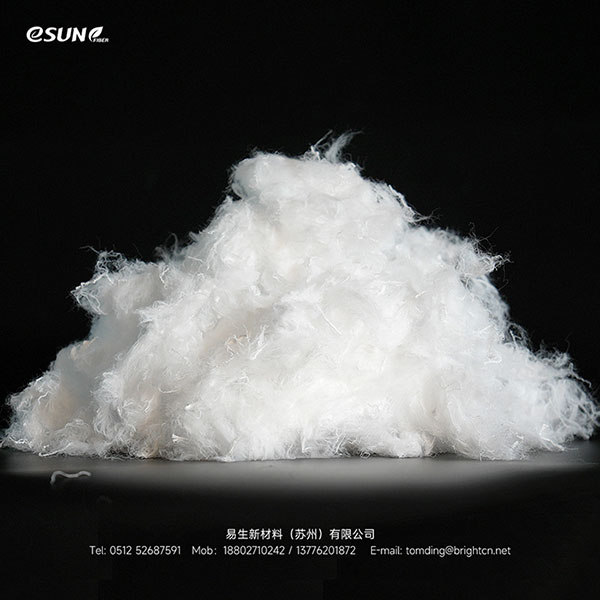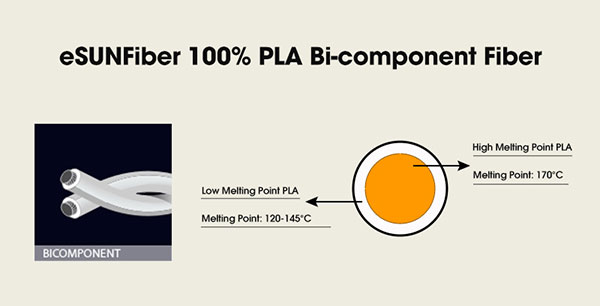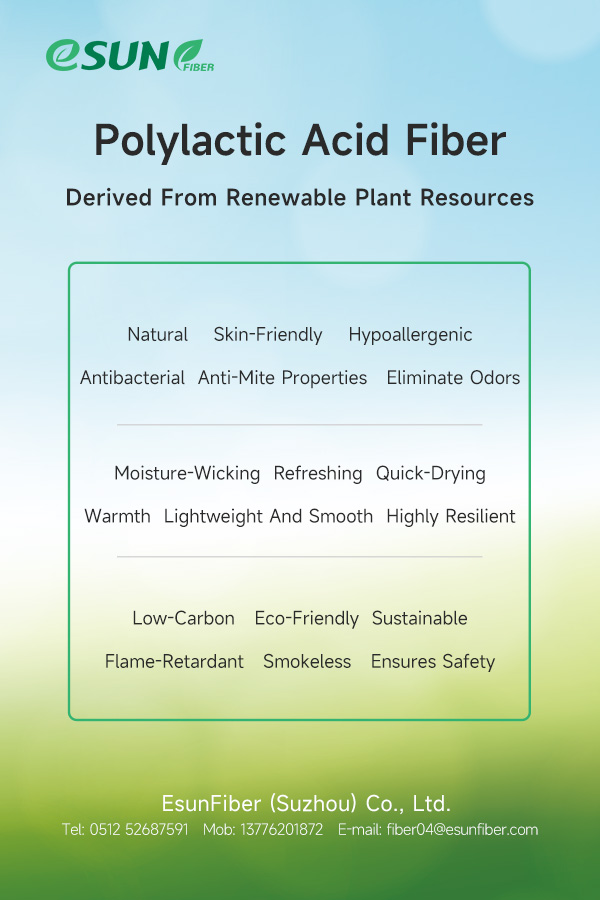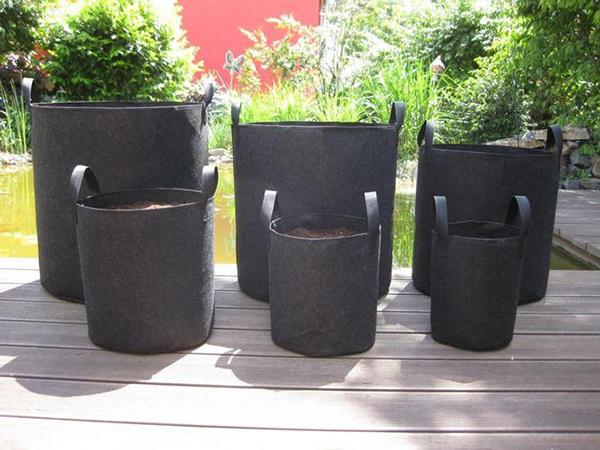ES Fiber or PLA Bi-component Staple? Analysis of the Application Prospects of PLA Bi-component Staple
About ES Fiber
In recent years, ES fiber has become very popular. As a bi-component sheath-core structure composite fiber, it features a low melting point and good softness in the sheath, while the core has a high melting point and strength. This fiber is particularly suitable for producing sanitary materials, thermal insulation fillings, filter materials, etc., through the hot air-through process.
Depending on the raw materials, the current market's ES fibers are mainly divided into PE/PP and PE/PET types.
With the implementation of the dual-carbon strategy and various environmental protection measures, the concept of "sustainability and environmental friendliness" also profoundly influences the textile industry. Many downstream application manufacturers are looking forward to using fewer and more sustainable raw materials to enhance the eco-friendliness of their final products.
At recent domestic and international professional exhibitions, eSUN's PLA Bi-component Staple has also garnered much attention and inquiries.
The combination of eSUN PLA Bi-component Staple with natural fibers such as hemp, cotton, and wool and regenerated cellulosic fibers like viscose, lyocell, modal, and bamboo fiber can replace conventional low-melting-point polyester fibers and ES fibers in the nonwoven field. It achieves complete degradability of materials, providing a more environmentally sustainable solution for upgrading and replacing related products. Additionally, PLA Bi-component Staple combined with natural or regenerated fibers can replace ES fibers, serving as a binder.
PLA Bi-component Staple Introduction

PLA bi-component staples are a leading and distinctive product of eSUNFiber, with mature production technology and stable product quality. The product is a bi-component skin-core structure composite fiber made of 100% polylactic acid, where the sheath component is made of low melting point polylactic acid with good softness, and the core component is made of high melting point polylactic acid with high strength.
After heat treatment, part of the sheath layer of the PLA bi-component staples melts and acts as an adhesive, while the rest retains the fiber state. The fibers are interconnected, forming a non-woven fabric body without adhesives, and it also features a low thermal shrinkage rate.

The absence of chemical adhesives prevents the introduction of allergens and irritants, maintaining the natural advantages. The resulting materials and products are non-toxic, non-irritating, more skin-friendly, and environmentally friendly, making them popular among consumers.
PLA bi-component staples have a wide range of processing suitability. The main non-woven fabric processing methods, such as CALENDER, THROUGH-AIR, NEEDLE PUNCH, WET LAID, AIR-LAID, and SPUNLACE, can be used. These fibers are particularly suitable for producing sanitary materials, thermal insulation fillers, filter materials, etc., through the hot air penetration. They are also the best choice for all degradable, non-woven fabrics, glue-free cotton, and natural composite board bonding materials.
PLA Bi-component Staple Applications
1.Non-woven Fabric Applications, such as sanitary materials, packaging materials, medical supplies
Due to its softness, low-temperature processability, non-toxicity, non-irritation, and lightweight, bi-component PLA fiber is ideal for manufacturing sanitary pads, diapers, and other hygiene products.
PLA bi-component staple is further processed into through-air, hot-rolling, needle punch, spun lace, and non-woven fabrics. It is applied to fast-moving consumer goods, packaging materials, and medical supplies.
2.Thermal bonding applications
PLA Bi-component Staple is an ideal thermally bondable fiber, mainly used for the thermal bonding process of non-woven fabrics. This is a form of "point bonding" rather than "area bonding," thus the product possesses characteristics such as bulkiness, softness, high strength, oil absorption, blood absorption, and other factors.
Using PLA bi-component fiber for thermal bonding has the advantage of achieving adhesion without the need for adhesives. This not only avoids the need to handle excess components, making it environmentally friendly and in line with the concept of sustainable development, but it also allows for a wide range of fabric properties and aesthetics.
When bi-component PLA fiber is mixed with natural fibers, man-made fibers, pulp, etc., and processed through dry or wet non-woven fabric processes, it significantly enhances the strength of the non-woven fabric. It also imparts dryness, breathability, antibacterial, and deodorizing effects to natural fiber products, complementing their advantages and significantly improving the performance of non-woven fabrics. This composite material is also widely used in disposable sanitary materials (including diapers, sanitary pads, underpads, healthcare mattresses, etc.) for top layers, bottom layers, and wrapping materials).
PLA bi-component staple can also be applied to filter materials, gardening household materials, insulation materials, adsorption materials, packaging materials, rigid fiberboards, automotive wall materials, and padding, etc.
3.Fillers
Utilizing the difference in properties of the two components, the shrinkage difference is generated after stretching and heat treatment, causing the fibers to produce permanent three-dimensional natural curls. Therefore, it can be widely used as fillers, such as flakes, stuffed toy fillings, mattresses, etc.. Its natural drying, antibacterial, and deodorizing properties have wide application advantages in baby products, elderly products, and pet products.
About eSUNFiber
Currently, eSUNFiber has one 10,000 tons/year melt-spun polylactic acid fiber production line, one 1,000 tons/year polylactic acid hot air non-woven fabric production line, and three functional polylactic acid fiber production lines. Among them, the three functional polylactic acid fiber production lines have an annual capacity of 5,000 tons and can produce various differentiated products such as three-dimensional curled fibers, dual-component PLA fibers, profiled fiber, polylactic acid yarn, and solution-dyed polylactic acid fibers.
eSUNFiber's polylactic acid fibers and non-woven fabrics have successfully passed the compost degradation test certification by DIN CERTCO (German Standards Association Certification Center). Regarding product safety, eSUNFiber's PLA non-woven fabric products have passed skin sensitization tests, ensuring product safety performance! Additionally, after testing by professional institutions, eSUNFiber's polylactic acid fibers have shown good antibacterial effects.
Welcome you inquire and discuss cooperation with us!
















